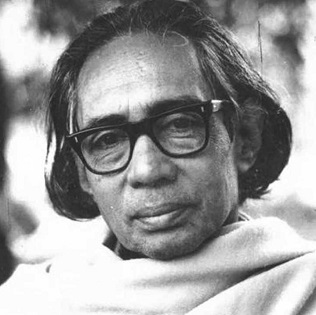 Art in every age corresponds to the beliefs, ideals and philosophical ideas it propagates. Iconography as a convention is inseparable from the religiosity and ritual it entails. It has penetrated very deeply into the psyche of people and idol worship is practiced, revered and celebrated in most Indian households as a medium to reach out to the divine. However no one can trace the origin of iconography, its existence is inevitable since the Harappan civilization. For instance, a female form, set in terracotta, having a rather elaborate head-gear, large eyes (as if keeping a watch), bare breasts, and bejewelled torso was essentially the woman-power being shaped in plastic art. Th e artist using his imagination and sensibilities perfected the art of creating an ideal image with certain superhuman qualities and attributes. Iconography, in the conventional sense, had involved the study, description, classifi cation, and interpretation of an icon (oft en religious) by sourcing and correlating textual sources with the evidence of the icon.
Art in every age corresponds to the beliefs, ideals and philosophical ideas it propagates. Iconography as a convention is inseparable from the religiosity and ritual it entails. It has penetrated very deeply into the psyche of people and idol worship is practiced, revered and celebrated in most Indian households as a medium to reach out to the divine. However no one can trace the origin of iconography, its existence is inevitable since the Harappan civilization. For instance, a female form, set in terracotta, having a rather elaborate head-gear, large eyes (as if keeping a watch), bare breasts, and bejewelled torso was essentially the woman-power being shaped in plastic art. Th e artist using his imagination and sensibilities perfected the art of creating an ideal image with certain superhuman qualities and attributes. Iconography, in the conventional sense, had involved the study, description, classifi cation, and interpretation of an icon (oft en religious) by sourcing and correlating textual sources with the evidence of the icon.
Today, it has acquired a position that is hard to uproot from people’s lives as iconography is synonymous with religious beliefs. A belief upheld by a particular religious group that considers the iconic image to be its visual property. Any artist tampering with this conventional historical image of any Hindu god or goddess for his creative liberty has to face the fl ak in the name of ‘off ending religious sentiments’ of a particular extremist group. We are very well aware that most of these ‘controversies’ are orchestrated by fundamentalists with ulterior motives.
Our current issue examines the issue of iconography as the celebratory and revered festival of Durga Puja awaits us. What images do we create or possess today to be equated with icons or in the conventional sense of iconography? Th e glorifi cation of popular fi lm stars, divas and celebrities are iconic images that appear today in the age of modernized and digitized India. Do they represent an extension of ourselves or the ideal that we yearn for? Do they just propagate styles and appearances that fade away soon, as new images are constantly being created rather than symbolizing and suggesting qualities of divine?
Th e historical lineage of iconography is complex and layered and correlates to the textual sources that are fast being shattered as the sensory supremacy of ‘sight’ alone is contested. The shift in the role of Indian modern artists stressing on the idea of personal authorship as opposed to anonymous sculptors and artists in history is also discussed.
Th e iconic image of Devi or Shakti has seen prolifi c artistic renditions and its representation has evolved with each age in history, symbolising the changing role of women specifi c to each age have been delineated. A new section on Art & Th eatre analyses the subject of using the body as a medium to communicate or express would make an interesting read.
We sincerely hope that our readers cherish this celebratory and festive edition that brings to light historicity and culture of iconography understood in a broader context.
Wish you all a very
Happy Durga Puja!
Siddhartha Tagore

